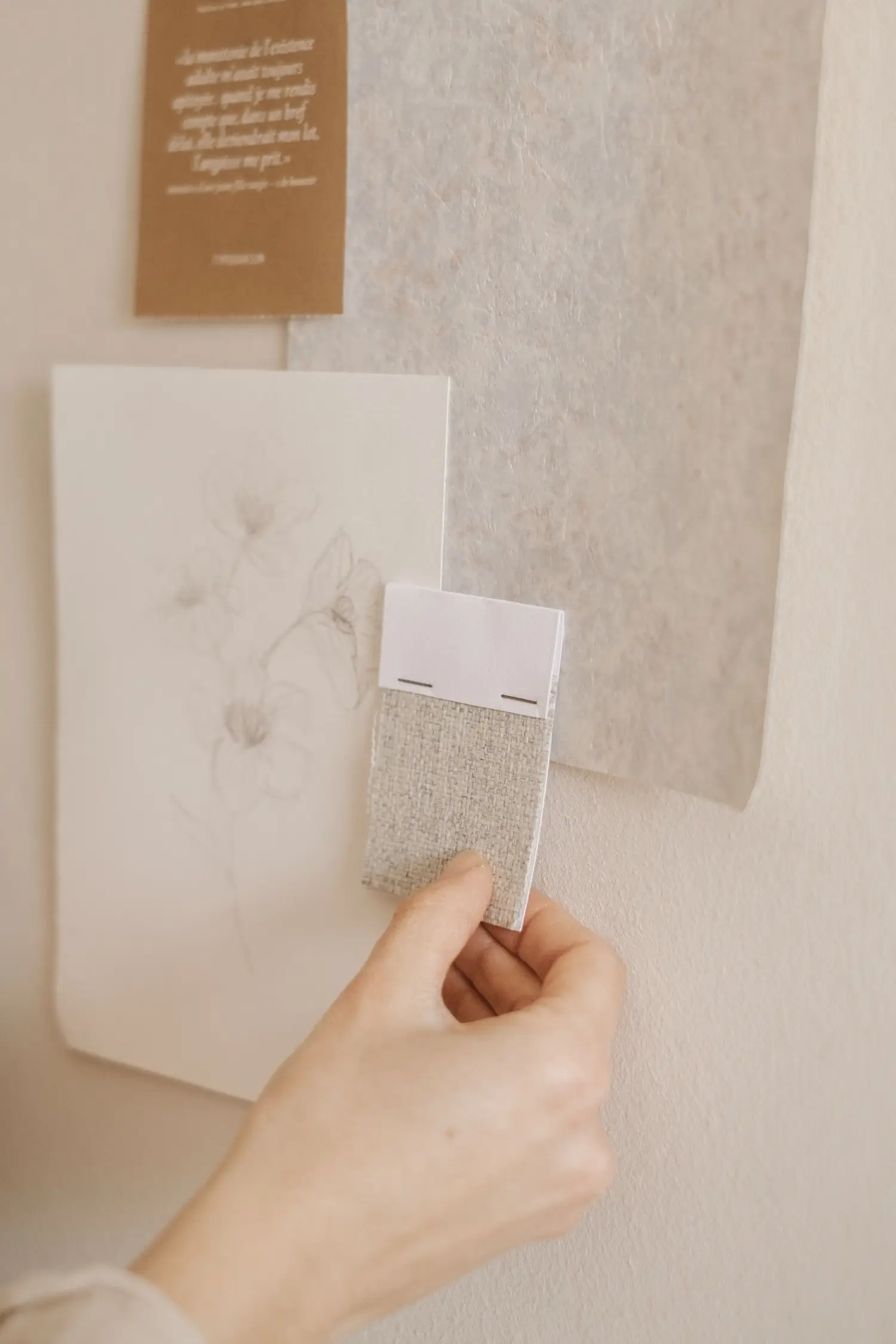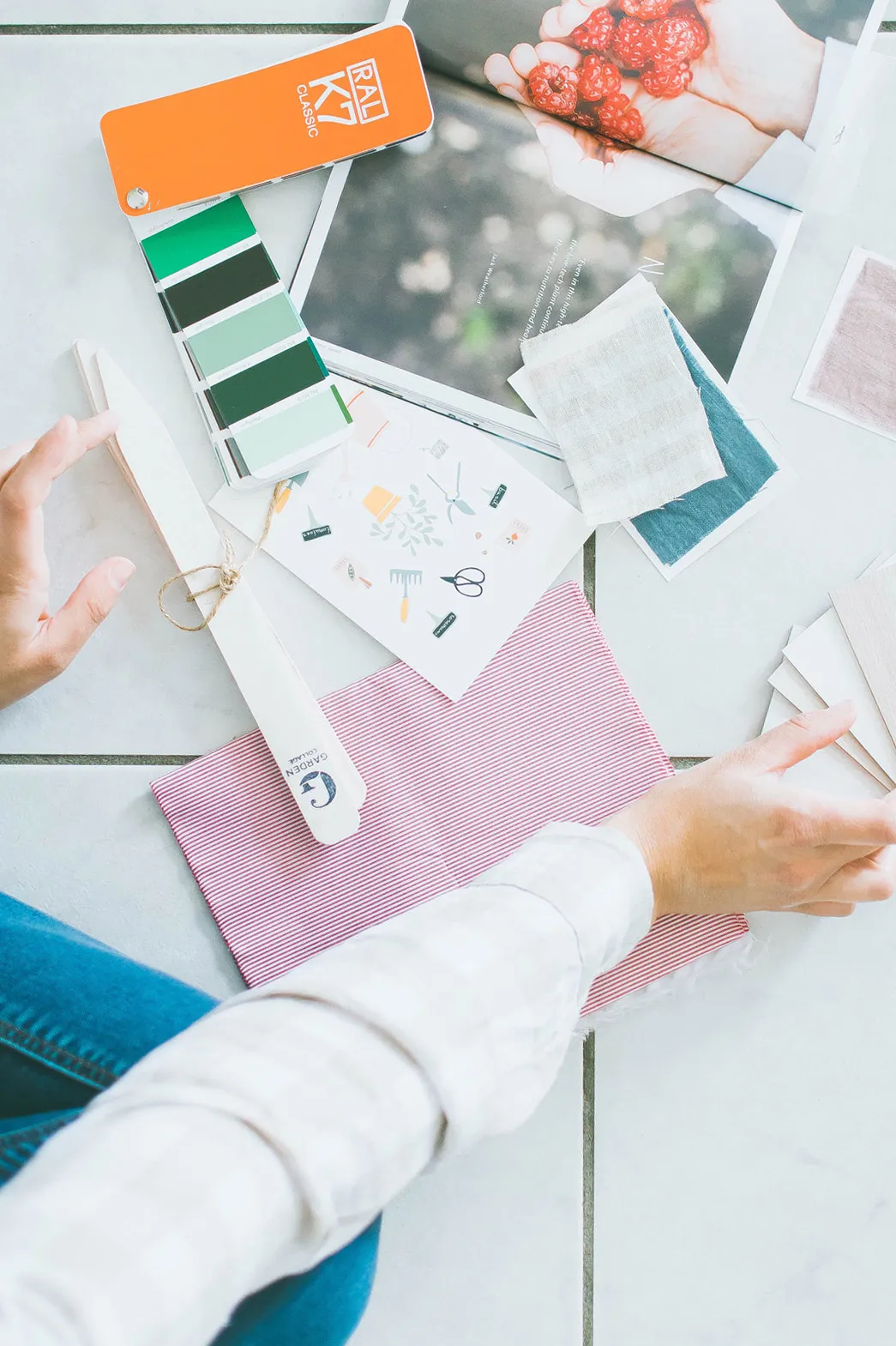
A creative atelier curating brand and web designs for women-owned businesses.I design and curate intentional brand designs and websites to cultivate your idea and bring your value out there.

A creative atelier curating brand and web designs for women-owned businesses.I design and curate intentional brand designs and websites to cultivate your idea and bring your value out there.
OK so – you’re just starting your branding journey and wonder where to even begin? I see you. You might have read a bit everywhere mood boards are key. Maybe your designer’s asked you to put one together before you both get started working on your logo. Creating a brand mood board can be quite revolutionary especially if you’re more of a visual person, and I promise your foggy ideas will feel much clearer once you’ll have a trusty mood board between your hands.
The reasons why you might want to create a brand mood board are many:
While creating a Pinterest board and throwing in any sort of imagery you love is quite tempting, crafting a mood board should actually be an intentional and strategic process. But how can you effortlessly create a mood board without being a pro/working in design? Stop worrying, below is my step by step guide on how to create a brand mood board that feels focused, strategic and always inspirational for your brand.

Before you dive into the creation of your inspiration board, try and take some time to actually study your brand. In order to build a focused branding, you should firstly have a clear idea of:
This kind of clarity will help you position and visualise your brand more easily: by knowing who you serve and how, you can quickly identify a price range for your service and therefore pick an aesthetic that matches it (entry level, medium-high, luxury…). Also keeping in mind who you’d ideally talk to allows you to pick inspiration that not only pleases your aesthetic eye, but also appeals to the right people.
A handy exercise within this stage could be trying to describe your brand through a short list of adjectives, ideally between 2-4. It means picking the best qualities of your brand, the ones that can help you describe it in the shortest and quickest way possible. Once you’ll have your list, you can start from those adjectives and build a strong aesthetic.
If you need more guidance to define your niche, ideal clientele and brand strategy, go check out my Get Client Hunted free email course >

The idea of creating a comprehensive brand board is to include a good mix of inspiration for any areas of your branding: colors, fonts, general mood and atmosphere, messaging, logo design, graphics, photography.
While most of these are mainly visual preferences and will come quite easy to subconsciously decide on a direction (if your brand is moody you’ll naturally pick images that are dark and dramatic; if your brand is positive and delicate, you’ll be more drawn to light and airy images), colors and fonts should be more conscious choices.
I highly recommend following this phase with your designer, because the psychology behind colors and fonts choices can be quite intricate and technical. If you’re firstly crafting your mood board on your own, you might decide to include some colors and fonts ideas, however do not consider them as definitive before consulting with an expert (this is too important to risk it!).
However here are a couple of resources you could check out if you want to learn more about these topics and build a much more focused mood board:
It’s time to start exploring and save anything that catches your eye.
Create a secret Pinterest board and start your searches by using the brand adjectives you selected before to look for inspirational images. Save anything you feel drawn to, without focusing too much on the consistency or the number of images.
Look for: photographs, textures, patterns, fabrics, spaces and interior, logos, colors, fonts, illustrations, and any kind of imagery that could deepen your brand’s visual representation.
The purpose here is to populate your board, so pin wildly and quite subconsciously in this stage. It might be worth working at this step in different days and times (you’ll notice your Pinterest home feed will start populating with related images over time as well), to gain more clarity during the process and include any late ideas too.

Once you’re happy with the pins you saved, it’s time to narrow down. Chances are your vision got clearer during the pinning process (which is extremely natural!), and the first ideas you pinned, which were much blurred and unfocused, might need to go now. Discard anything that doesn’t feel coherent in the whole, anything that doesn’t 100% represent what you want your brand to look like. Do not overthink it: the mood board is not your brand after all, but an initial inspiration of how it should look and feel, so anything that catches these sensations can definitely stay.
If you’re sharing your mood board with a designer, your work might end here. Otherwise you could refine your selection even deeper, by grabbing a limited number of images (between 6-10) that really summarize your vision and pull them together. Print them out and lay them down on a flat surface to generate a visual imagery puzzle that you can keep as reference for your future branding choices. Enrich it with fabric swatches, Pantone chips, natural pieces, to compose an even clearer vision.
Or use an online tool like Milanote for this task. Their Illustrative Moodboard or Design Brief templates (but they literally have so many!) are simply perfect to help you narrow down your selection and build a digital collage you can keep as a reference.
And there you have it, your full guide on how to build your brand mood board! I promise this step of the process can feel rather fun and creative, and while it might sound quite visionary and abstract in the beginning, you’ll soon notice how creating a brand mood board can help you gain much more clarity and finally put an actual face to your ideas. Have fun!

I'm Giada Correale, brand and web designer of Miel Cafè Design graphic studio. I design intentional and editorial brand identities and web designs for heartfelt women-owned businesses.

I'm Giada Correale, brand and web designer of Miel Cafè Design graphic studio. I design intentional and editorial brand identities and web designs for heartfelt women-owned businesses.
A creative atelier curating brand and web designs for women-owned businesses.
I design and curate intentional brand designs and websites to cultivate your idea and bring your value out there.